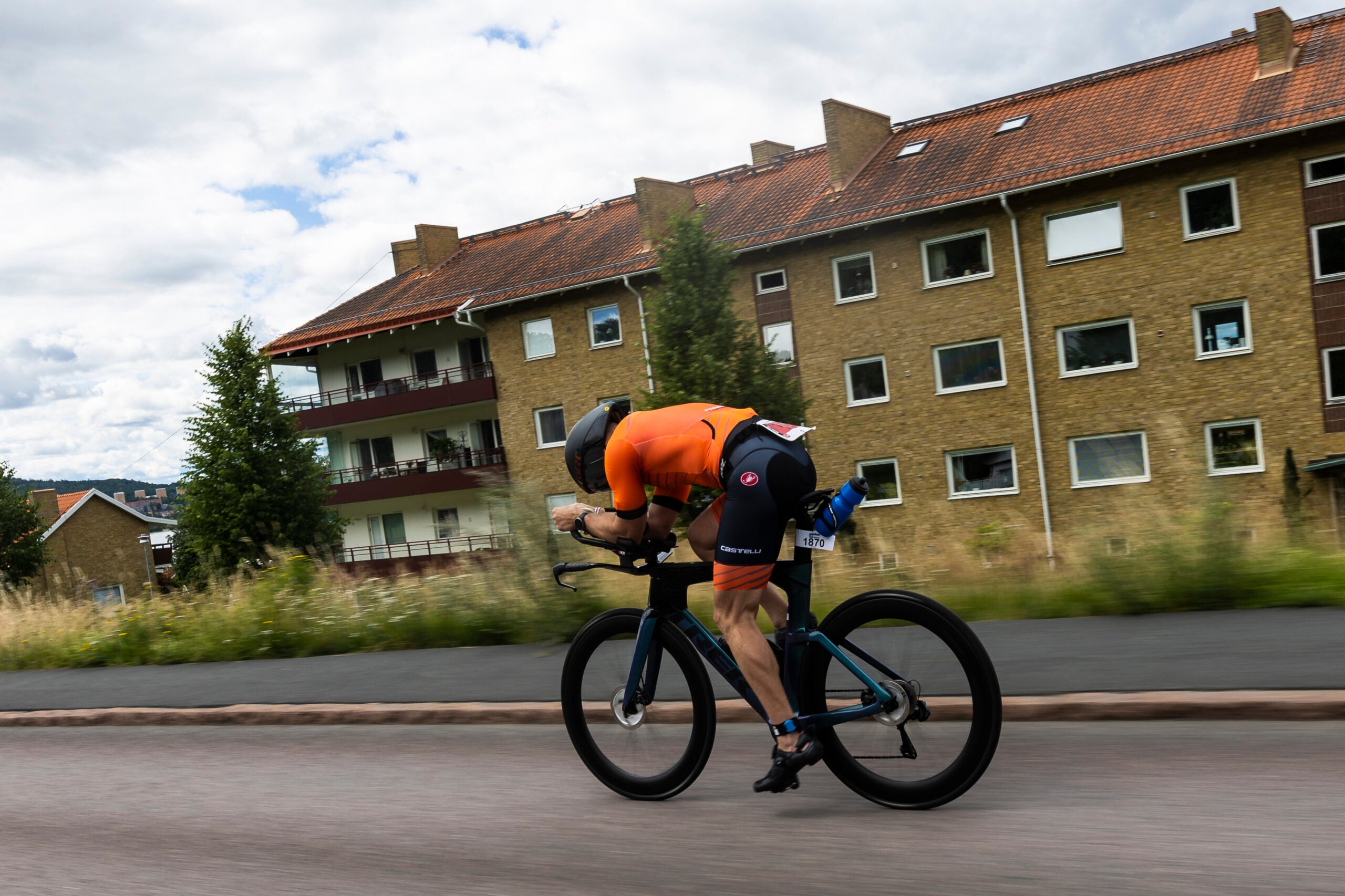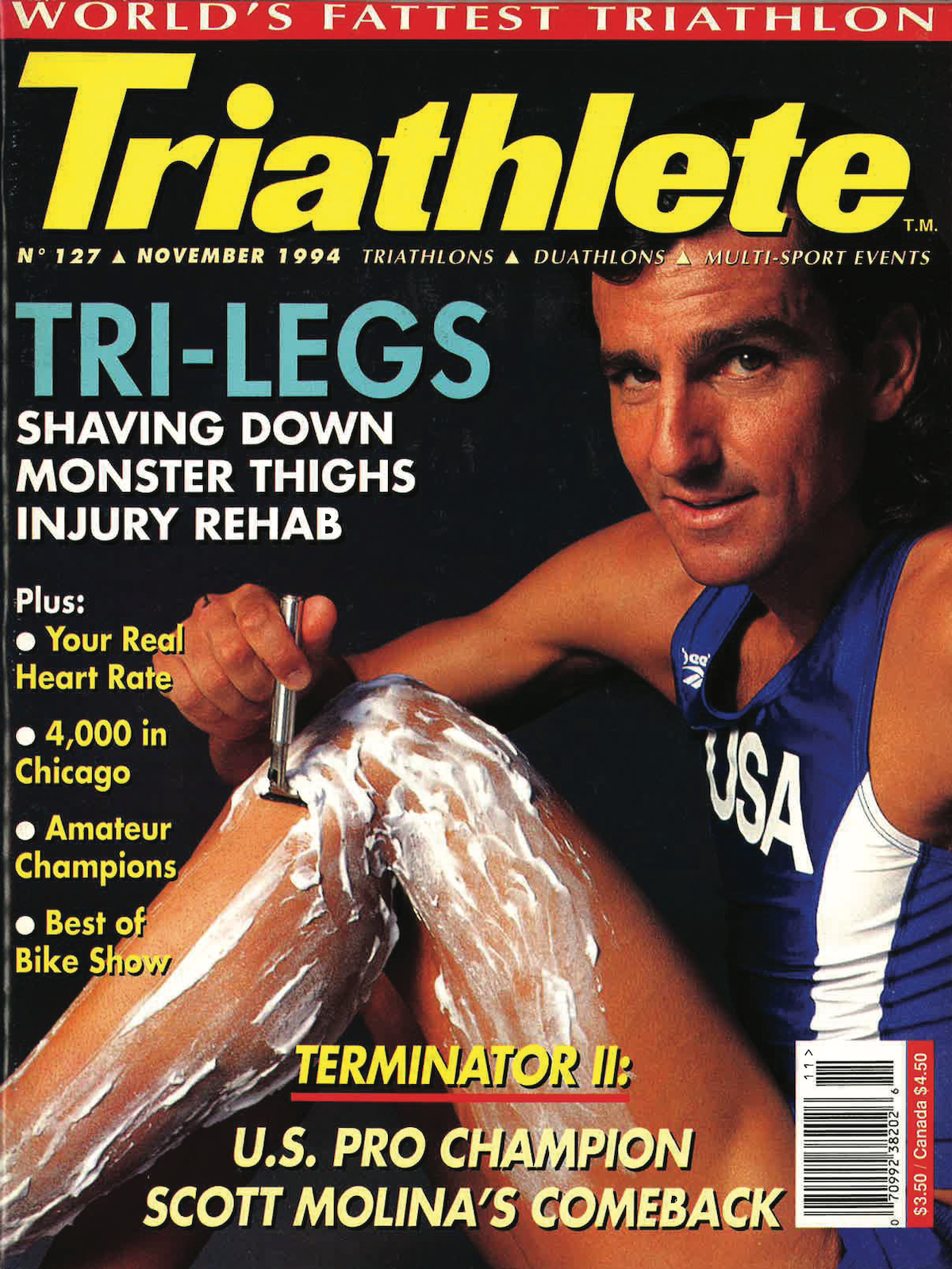New perk! Get after it with local recommendations just for you. Discover nearby events, routes out your door, and hidden gems when you sign up for the Local Running Drop.
To be a triathlete is to constantly be answering questions about our weird little sport. When I tell people that my hobby is triathlon (and my job, too, as an editor at Triathlete), I know I can expect a line of questioning that goes a little something like this:
- What’s a triathlon?
- How far is that?
- How long does it take you?
- Wait, you swim, bike, and run all in the same day? Do you get breaks?
- Are you crazy?
I still haven’t figured out how to answer that last one, because let’s be real, it’s hard to say. Anyone who decides to swim, bike, and run in consecutive order, for a duration of 17 minutes to 17 hours, all while wearing a neon spandex suit—well, they’re arguably not of sound mind.
The simple truth of triathlon is that triathletes really, really love to exercise. Running a half-marathon is not enough! We must swim 1.2 miles to warm-up, bike 56 miles to dry off from the swim, and then embark on our run before we can collect our finisher’s medal, eat a massive stack of celebratory pancakes, and brag to anyone within earshot. (That’s the other simple truth of the sport: triathletes really, really love to talk about triathlon.)
If you’re reading this, it’s probably because you’re a little tri-curious. Maybe you keep wondering why your neighbor is always leaving the house at 5 a.m. to ride a funky-looking bike, or perhaps your city has been overtaken by hordes of triathletes for a race this weekend and you want to know what these weirdos are up to. Consider this your guide to understanding triathlon, where we’re going to answer your most-Googled questions about the sport.
What is a triathalon?
Hold on just a minute here. Before we begin, a quick public service announcement: “Triathlon” is spelled with only one “a.” A lot of people with only a passing knowledge of triathlon spell (and pronounce) it “tri-ath-a-lon.” But it’s “triathlon,” with three syllables and one “a.”
At Triathlete, we have a running joke (get it?) that the majority of an editor’s job is deleting the “bonus a” in communications about triathlon. That’s not entirely true. We also spend a lot of time deleting two spaces between sentences and looking for snacks. When you train for three sports, you get hungry, OK?
OK, what is a triathlon?
The “tri” in triathlon refers to the three sports: swim, bike, and run, almost always in that order, performed consecutively over set distances. Triathlon is the cousin of other sports within what is known as the “multisport” family, which includes duathlon (a bike-run race), aquathlon (swim-run), and aquabike (swim-bike).
There is also a winter triathlon, with running, mountain biking, and cross-country skiing. This is not to be confused with biathlon, which combines cross-country skiing and shooting. Triathletes have notoriously bad aim. If you don’t believe me, look inside a port-a-potty at any triathlon race. We should not be allowed to handle weapons.
What are the triathlon distances?
Any distance of swim-bike-run can be a triathlon! The shortest standardized triathlon distance is a sprint triathlon, while the longest is the iron distance (sometimes referred to as an IRONMAN, which is a brand of races, but not the only brand that puts on iron-distance races).
| Triathlon Distance | Swim Distance | Bike Distance | Run Distance |
| Sprint | .75K | 20K | 5K |
| Olympic | 1.5K | 40K | 10K |
| Half-Iron/70.3 | 1.2mi. | 56mi. | 13.1mi |
| Iron | 2.4mi | 112mi. | 26.2mi |
There are shorter and longer races outside these parameters—known as “super sprint” and “ultra distance,” respectively—but the distances for these events are not standardized, and thus vary widely from race to race.
RELATED: What You Need to Know About Every Triathlon Distance
How long does it take to finish a triathlon?
Triathlon finishing times vary from person to person, and even race to race. Flat courses tend to see faster finishing times than hilly ones, and factors like weather, swim conditions, and even how well an athlete fuels and hydrates come into play. Also shorter races tend to take less time than long races (who knew?). But on average, triathlon finishing times tend to fall within these ranges:
| Average Triathlon Finish Time | Total Time | Swim Time | Bike Time | Run Time |
| Sprint | 1:30-2:00 | 20-25 min. | 45 min.- 1 hr. | 30-40 min. |
| Olympic | 2:52 (men) & 3:07 (women) | 32-35 min. | 1:30-1:40 | 50-55 min. |
| Half-Iron/70.3 | 5:51 (men) & 6:18 (women) | 37-38 min. | 2:55-3:10 | 2:07-2:17 |
| Iron | 12:27 (men) & 13:16 (women) | 1:10-1:13 | 6:10-6:40 | 4:50-5:15 |
RELATED: How to Estimate Your Triathlon Finishing Time
Are triathlons hard?
That’s entirely up to you. Triathlon can be as hard or as easy as you want it to be. Some people use it as a way to empty out the tank, physically and emotionally, while others take a more chill approach. There’s no “right” way to race a triathlon, so long as you’re having fun.
The definition of “hard” is also relative when it comes to the type of racing you’re doing: It’s not uncommon to hear someone who races half or full iron-distance events insist that the much-shorter sprint or Olympic distance is painfully hard. Slow, measured doses of effort, even if they take all day, can be a lot more comfortable than a concentrated punch of fast and furious racing. Conversely, some people treat racing like a pulling off a band-aid: Rip that sucker as quickly as possible. It might be uncomfortable, but it’ll also be mercifully brief.
Are triathlons healthy?
One assumption triathletes often encounter is the notion that all that exercise can’t possibly be healthy. After all, doesn’t running wreck your knees, and isn’t all that training bad for your heart? They also encounter the complete opposite: that triathletes must be the most fit people on the planet. It’s a paradox, for sure, with the truth lying somewhere in the middle.
The running-destroys-your-knees myth has been soundly put to bed by scientific research, and even though endurance events (from marathons to long-distance triathlon racing) can be hard on the body, many of these effects can be mitigated with proper nutrition, sleep, and recovery outside of workouts. It’s also important for athletes to work with a healthcare provider to make sure everything is running smoothly—even the fittest triathletes are not exempt from underlying health issues (just ask Tim O’Donnell, a pro triathlete who survived a “widowmaker” heart attack during a half-iron race, caused by a genetic heart condition).
The bottom line: Triathlon training is exercise, and exercise is almost always good for your health! But exercise is only one piece of the health puzzle, which is why you’ll often hear triathletes talk about their sport as a holistic lifestyle, requiring attention to nutrition, recovery, and mental health.
How do triathletes train?
Contrary to what you might think, triathletes typically don’t train in all three sports every day. Instead, they follow what’s known as a training plan, where swim, bike, and run workouts alternate each day. Some training plans have two workouts per day, so an athlete might do an hour-long swim before work, then a 30-minute run at lunchtime.
On the weekends, triathletes tend to do their longest workouts—usually a long bike ride of 1-5 hours (depending on the race distance they’re training for) one day and a long run of 3-20 miles (again, depending on race distance) on the other day. They might also do what’s known as a “brick” workout, where a bike and a run workout are stacked together, back-to-back, on the same day.
Why don’t triathletes train in all three sports in consecutive order on the same day? For starters, time—few people, who aren’t pro athletes, have the time (or desire) to give up most of their day to exercise. It’s also not necessary to do so. Rotating workouts each day lets an athlete train each discipline—swim, bike, or run—to build up the strength and endurance they’ll need. By following a well-designed training plan, all three disciplines come together seamlessly on race day.
RELATED:4 Printable Training Plans for Every Distance Tri
How do triathletes pee?
You may have heard triathletes pee themselves in the pool, on the bike, or even during the run. As much as I’d love to clutch my pearls and take offense, I cannot tell a lie. Triathletes pee. We pee everywhere.
Most triathletes are pretty good about holding it until they get to a port-a-potty on the race course, and I’d even argue that most prefer to do it that way. But triathletes who are in the hunt for a personal-best time or racing to win have been known to get it out in motion while they’re swimming, cycling, or running. Our triathlon clothes are designed to be quick-drying, and in a race, we’re already covered in sweat, sports drink, and a number of questionable fluids anyway. What’s a little pee?
(While we’re on the subject of peeing, a note to people who volunteer at the swim exit at races, helping triathletes with wetsuit removal: Your service is deeply valued and appreciated. But please, please, please go home and take a shower after your shift is over. There’s more than lake water in those wetsuits. Did I mention you are deeply valued and appreciated?)
Are triathlon bikes comfortable?
Any bike is a triathlon bike, whether it’s a mountain bike from a department store or a fancy carbon-fiber road bike. But when most people talk about triathlon bikes, they’re usually referring to what’s also called a time trial bike or TT bike—a set-up that looks something like this:

A triathlon bike is designed for maximum aerodynamics (read: speed) at minimal effort. Unlike riders at the Tour de France, for example, who can wreck themselves all the way to the finish line, triathletes still have to run when they get off their bike. Tri bikes feature aerobars, or funky-looking handlebars on which athletes can rest their elbows, so the rider can be as small as possible to slice through the wind. Most triathlon races do not allow drafting (riding behind another athlete to avoid wind resistance), so individual aero advantages are extremely important.
Riding a triathlon bike takes some getting used to, but it is neither more nor less comfortable than riding any other bike. The key to being comfortable on a triathlon is to get a bike that fits properly, a saddle (seat) that is designed for your anatomy and seat bones, and bike shorts that don’t chafe.
RELATED:The Best Triathlon Bikes
Do triathletes run in bike shorts?
When most people think of riding a bike, they think of wearing thick, padded bike shorts. Though some triathletes race in those exact shorts, most opt for tri-specific shorts with thinner padding (known as a “chamois”). Why? Because triathletes wear the same shorts for the entirety of their race: swim, bike, and run. Exiting the swim wearing bike shorts completely saturated with water is the soggy-bottom equivalent of wearing a full diaper—not a pleasant experience to sit in, much less ride a bike or run. A thinner chamois dries out faster and is less cumbersome to run in, and today’s tri shorts are just as comfortable to wear on a bike as their thick-padded counterparts.
RELATED: What Do I Wear to My First Triathlon?
How do triathletes change clothes?
Most triathletes don’t change clothes in a race. Instead, they wear the same outfit from start to finish. The accessories may change—a wetsuit to stay warm during the swim, a helmet on the bike, and a hat for the run—but start to finish, the outfit is the same. These accessory swaps happen in the aptly-named “transition area,” a central hub where athletes stash their race gear to make quick swaps between swimming, biking, and running.
Some longer races, like iron-distance events, provide changing tents for athletes who wish to change their clothes for long-distance comfort between swim, bike, and run. But this is a courtesy, and athletes are not required to wear different clothes for each discipline. Most prefer to wear the same thing for all three legs of the event, even in a race of 10 hours or more.
RELATED:Your Triathlon Change Tent Questions, Answered
Do triathletes wear socks?
In the interest of getting from start to finish as quickly as possible, triathletes look to be efficient in their transitions. For some, this can mean foregoing the 30-second fumble to get socks on for the bike and/or run.
Cycling sockless doesn’t have too many drawbacks, but running sockless can have a lot of complications, especially if you’re not wearing the right shoes for the job. Blisters, hotspots, and chafing are very real concerns that can slow a sockless triathlete down quite a bit, more so over longer distances, so the sock-or-no-sock decision is one best made after careful experimentation in training.
RELATED:Should I Run Sockless in my Next Triathlon?
Do triathletes shave their legs?
We do. Even the dudes. In fact, we put it on the cover of Triathlete Magazine one year. It’s weird, I know. We say it’s because of aerodynamics, but I think secretly everyone loves having silky-smooth gams.

How do triathletes make money?
The short answer is that most professional triathletes don’t really make much money. At least not from racing. Though some races offer massive prize purses (the first-place male and female at the new PTO Tour races, for example, wins $100,000), most winners take home something like $3,000 (the first-place award at IRONMAN 70.3 Bintan) or $7,500 (World Triathlon Cup)—often not even enough to cover travel costs to the race.
Some pros turn to sponsorships to offset the costs of gear and travel, while others work as paid spokespersons or ambassadors for tri-related brands. But many professional triathletes live the same lifestyle as the everyday amateurs who share the course with them: working while training when they can and traveling to races on the weekends.
RELATED: How Does A Triathlete “Go Pro?”
Got more questions about triathlon? Check out our training plans, workouts, beginner triathlete info, and more, and follow us on Instagram, Twitter, and Facebook.
